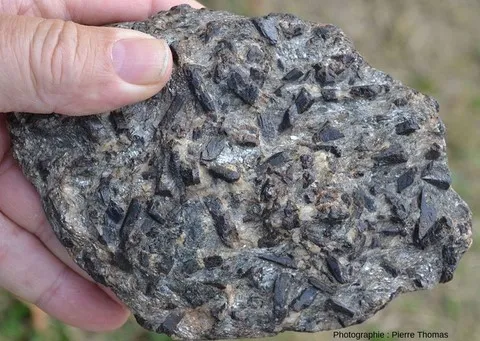What is a mica-schist in geology ?
Mica-schist : definition
Mica-schists are common metamorphic rocks of the epizonal to mesozonal domain, deriving from the general metamorphism of clays or pelites. They have a well marked foliation, characterized by an easy flow in platelets with shiny micaceous surfaces.
The constituent minerals of mica-schists are mica, which is very abundant (biotite and/or muscovite), forming very visible thin beds, quartz, feldspars (less than 20%), and various minerals often present in the form of porphyroblasts. The nature of these porphyroblasts makes it possible to distinguish the varieties of mica-schists (mica-schists with garnets, staurolite, andalusite, kyanite, cordierite, etc...), and faithfully reflects the intensity of the metamorphism undergone. The mica-schists are thus valuable indicators of the metamorphic gradient.
The constituent minerals of mica-schists are mica, which is very abundant (biotite and/or muscovite), forming very visible thin beds, quartz, feldspars (less than 20%), and various minerals often present in the form of porphyroblasts. The nature of these porphyroblasts makes it possible to distinguish the varieties of mica-schists (mica-schists with garnets, staurolite, andalusite, kyanite, cordierite, etc...), and faithfully reflects the intensity of the metamorphism undergone. The mica-schists are thus valuable indicators of the metamorphic gradient.

